Update on Coronavirus’ Impact on American Travel–Week of March 30th
Archive for month: March, 2020
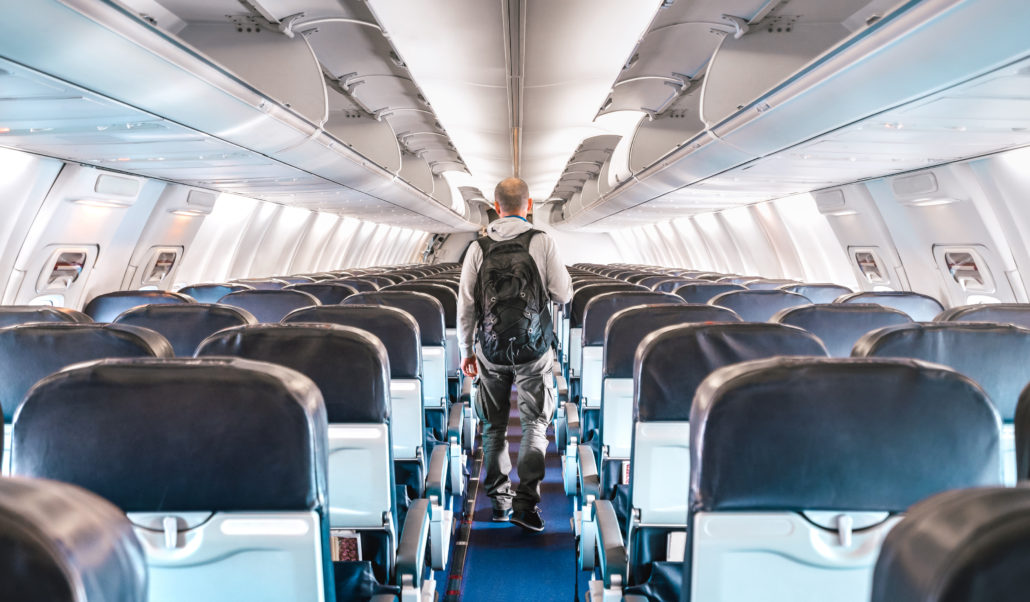
As COVID-19 spreads, so does its devastation on how Americans feel about travel. In the latest wave of Destination Analysts’ Coronavirus Travel Sentiment tracking study (collected March 20-22), nearly two-thirds (64.3%) of the 1,200+ American leisure and business travelers surveyed said their travel had been upended by the virus. This is up 20 percentage points from just one week prior and nearly six times what it was on February 22nd.
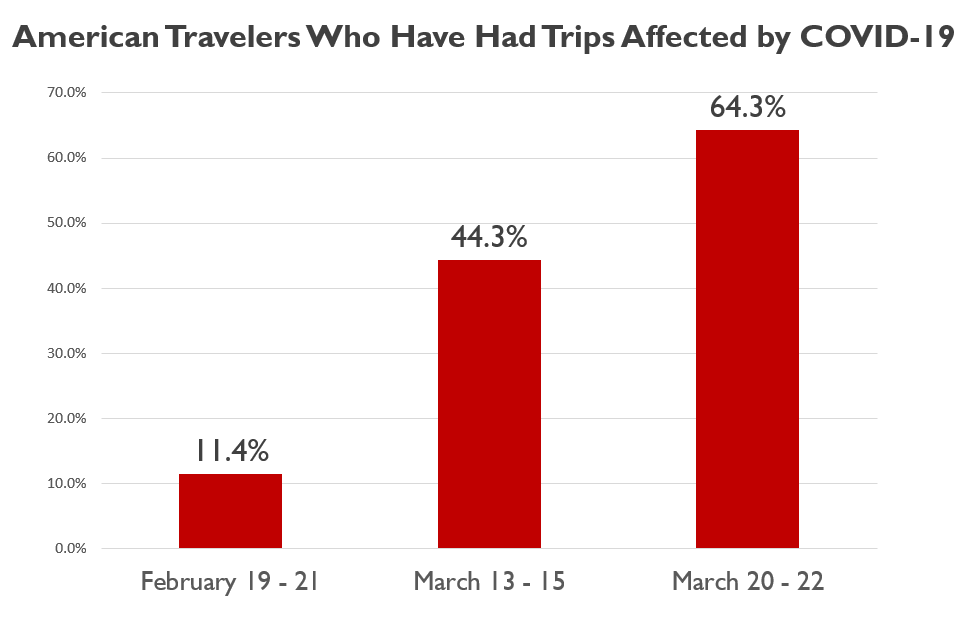
.
Unfortunately, this impact appears to have resulted in more cancelled—rather than postponed—trips. As shown in the graphic below, 63.0% of American travelers who had travel affected by coronavirus have cancelled a trip (up from 55.1% on week prior), while the percent reporting they have postponed a trip has declined from 51.0% to 46.7%. Other reported impacts on travel—such as changing destinations–have not yet been significant.
.
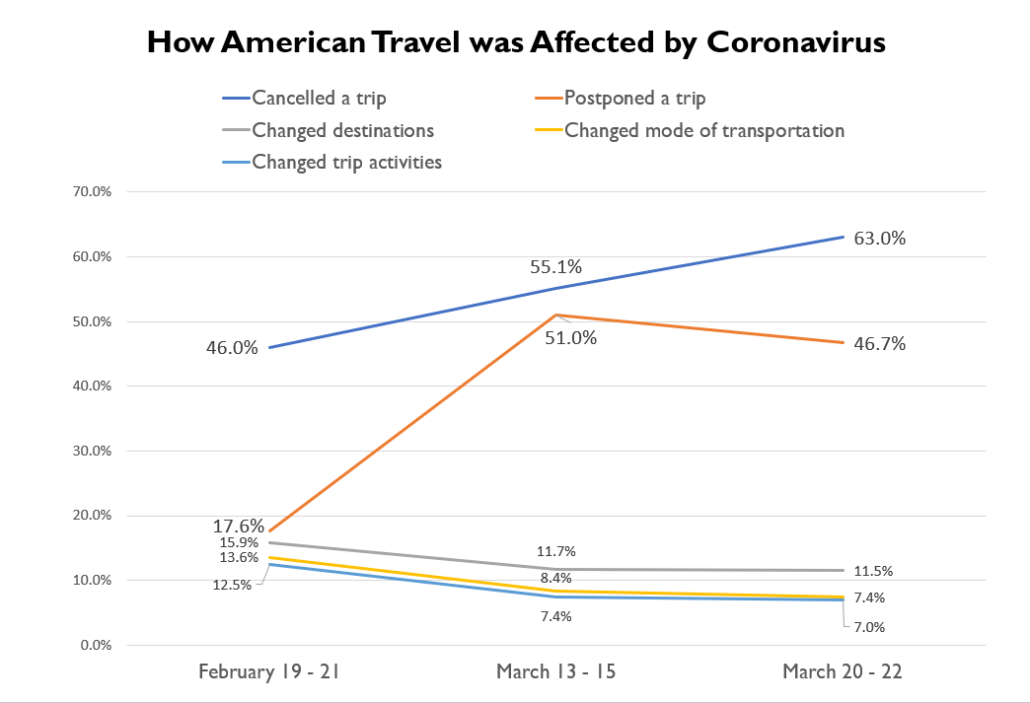
.
.
.
.
.

NOTE: An enormous “THANK YOU” to our friends at the Virginia Tourism Corporation for allowing us to share this data from an ongoing American Travel Sentiment study Destination Analysts conducts on the organization’s behalf.
Between February 19th and 21st, Destination Analysts fielded a survey to a random sample of American travelers which, among other topics related to their travel, inquired about the impact of the coronavirus on their current and future travel plans. During this (now relatively blissful) period, the virus had not yet had such an extensive global reach. There were only a few cases of coronavirus in the United States and no related deaths. With a few exceptions, most international and domestic flight service was near normal levels. Italy was amongst the top foreign countries Americans wished to visit.
Although there has been a rapid change in circumstances (as pandemics tend to do), looking at American travelers’ response to coronavirus at that time gives us some view into the scale of its ultimate impact.
During those few days in late February, 11.4 percent of American travelers said that the coronavirus had affected their travel in some way. Another 8.2 percent felt unsure. Being younger and having children appeared to be key factors in whether one was impacted: 20.1 percent of Gen Z travelers said their travel was affected, compared to just 8.0 percent of Boomers. Those with children under the age of 18 in their household were more than twice as likely to say their travel was affected compared to those without kids (18.4% vs. 7.9%)

For those who said their travel was in some way impacted by coronavirus, we asked a follow up question as to how. As shown in the accompanying chart, most commonly a trip that was planned for the subsequent few months had been cancelled, and concerns about traveling had increased. Also note that at the time, one-in-five of these travelers who were affected said a trip that had been planned in the previous month had already been cancelled.
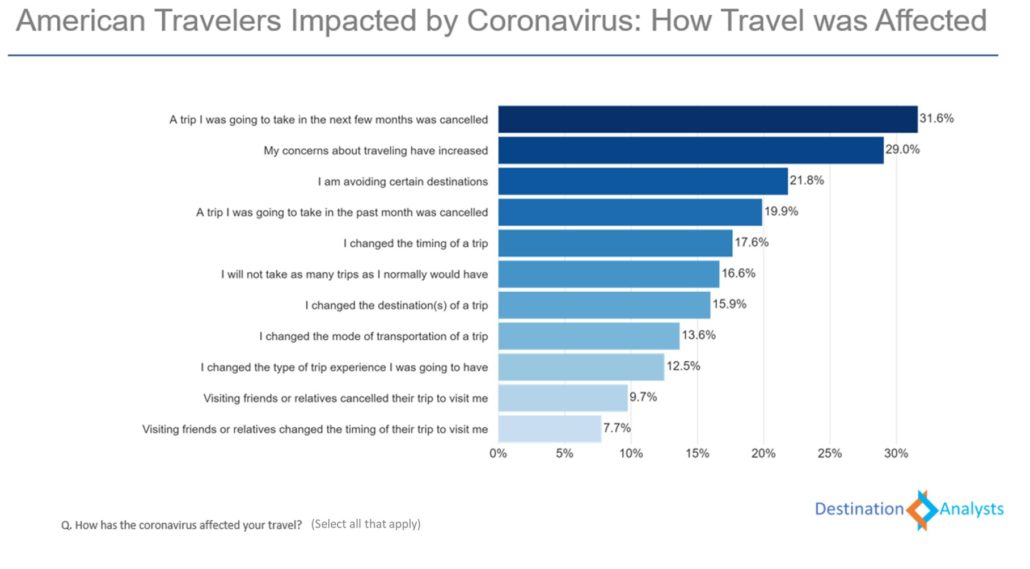
Interestingly, how an American traveler was impacted varied greatly by age. Millennial and Gen Z travelers were much likelier to say a trip in the coming months had been cancelled compared to Baby Boomer travelers ( 42.4% vs. 15.5%). Older travelers were likelier to express increased concern about traveling (55.6% of impacted Boomers compared to 12.1% of impacted GenZ and Millennial travelers). Well over half of Baby Boomer travelers who felt that their travel had been impacted by coronavirus said they were avoiding certain destinations; comparatively, less than 10 percent of impacted younger travelers felt that way. Millennial travelers also appear largely unwilling to give up travel—just 6.8 percent of those travelers whose plans were affected by coronavirus said they “will not take as many trips as I normally would have.”
The study of the changing extent and impact of the coronavirus on travel and the travel industry is, of course, ongoing. To our clients and industry partners, please be assured we will update you as much and as often as we can.
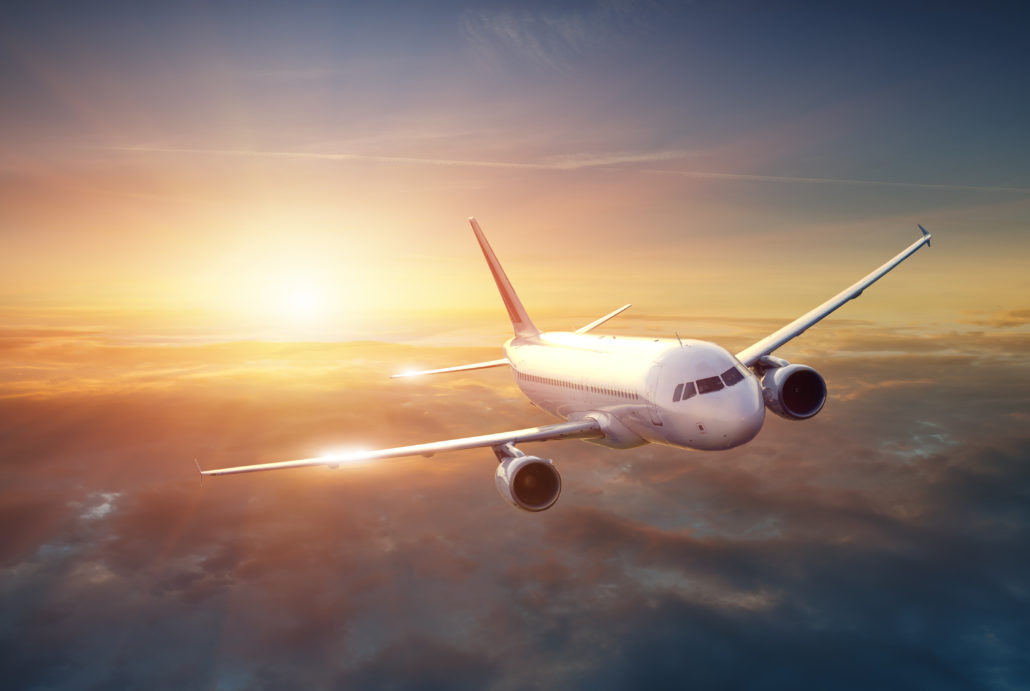
One of the theories the travel industry is hopeful about is that amidst the current reality of flight cancellations, travel advisories and quarantines, a deep well of wanderlust will be building amongst travelers—and like prisoners in a jailbreak, will rush to express itself once opportune to.
This would be an ideal outcome, given the thousands of tragic deaths and devastation the virus has caused the global economy. Adding salt to this deep wound, prior to the coronavirus unleashing its havoc, the travel industry looked poised to have a good year. Domestically, in our January The State of the American Traveler study, Americans reported a greater number of leisure trips, and their optimism for increased leisure travel in 2020 had inched up from 12-months prior. Findings from our 2020 The State of the Global International Traveler study showed similar enthusiasm amongst travelers across much of the world–and, sadly, demand for Japan and Italy—countries now facing major travel restrictions—were amongst the highest globally.
What might we expect after the pandemic hopefully ceases? Let’s look more deeply at China as a case study on what we might hope for.
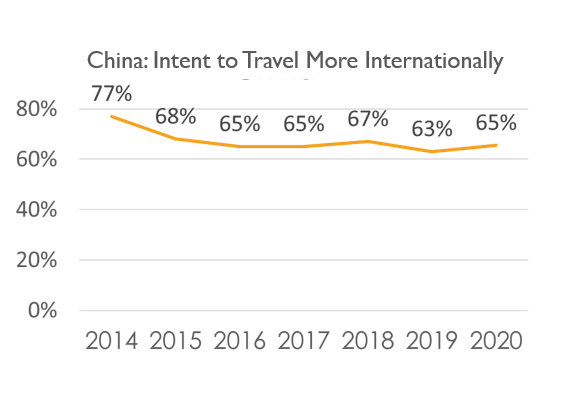
Destination Analysts fielded its annual The State of the Global International Traveler survey to a random sample of Chinese international travelers between January 19th and 27th. During these nine days, the first dozen deaths from coronavirus were recorded, Wuhan and 12 other cities were placed on lock down, Lunar New Year celebrations were cancelled and travel restrictions were imposed. The full extent—and consequent impact—of the virus on the Chinese and world’s health systems, travel systems and economies was still yet unknown.
However, at that time, Chinese international travelers expressed increased optimism for their international travel in 2020 (65.5% said they would take more international trips this year than they did the year prior, and 62.5% said they would spend more on their international travel this year than previously), returning to levels in 2016 and 2017—when Chinese arrivals to the United States were in a period of strong growth. One-in-five Chinese international travelers said that their global travels would be an “extremely high priority” in terms of what they choose to spend their financial resources on this year. Another 28.2% said it would be a “high priority.” This sentiment, along with their anticipation to travel and spend more internationally (in fact, the average Chinese international traveler said they would be spending US $3,542 on international travel this year), puts them as among the most aspirational international travelers in the world.
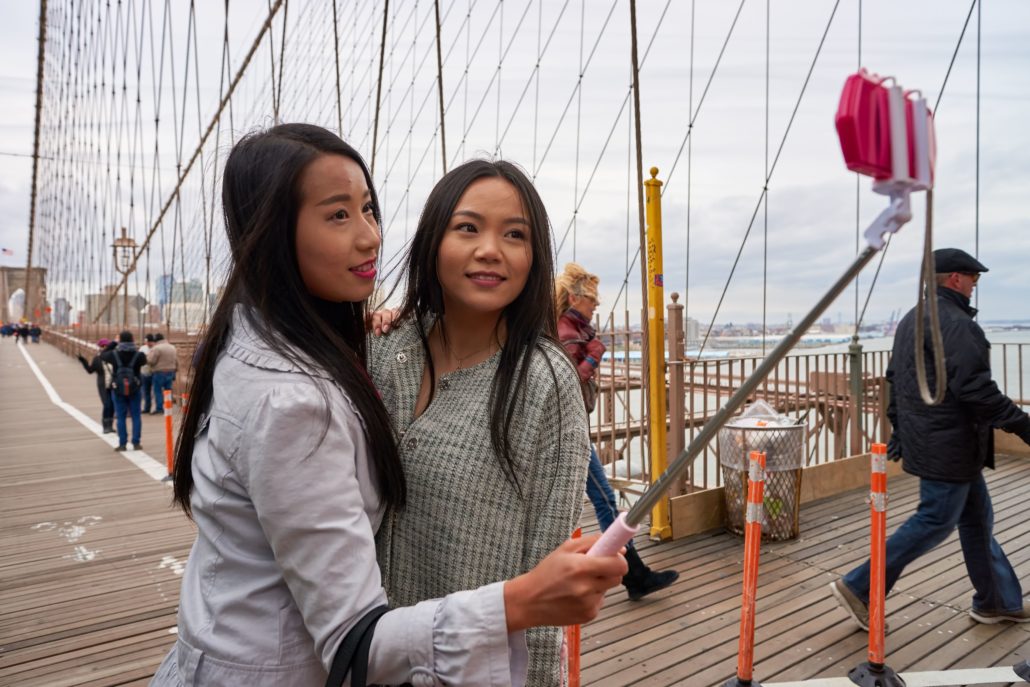
When Chinese international travelers feel a semblance of normalcy again, the United States looks to be a beneficiary. When asked to name—in an unaided format—the top three foreign countries they most wanted to visit in the next year, the United States was written in by 41.1 percent of Chinese international travelers—it was second only to Japan (50.5%) and nearly double the third most written in destination, France (22.3%).
So as we send gratitude and support to healthcare communities across the globe, and wish for healing and recovery soon, as we look to the future, we as the travel industry may have some reasons to feel hopeful.
For more and deeper insights into global travel trends, order the 2020 The State of the International Traveler report by emailing info@destinationanalysts.com.
